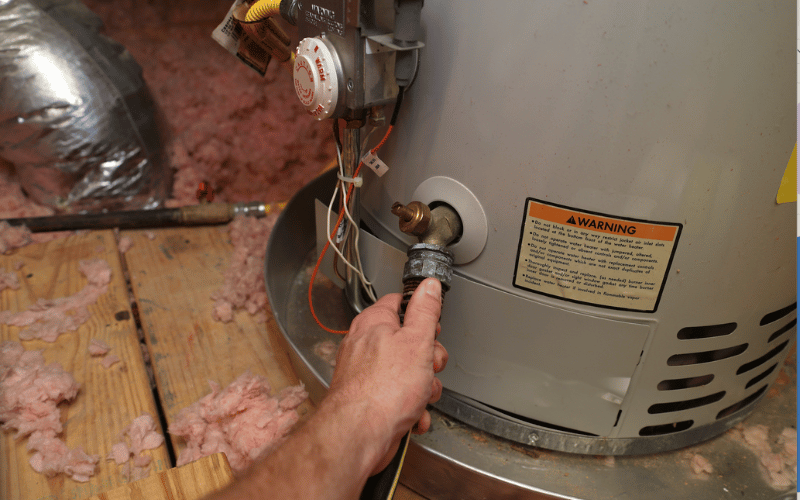Are you searching for tips involving What Kind of Maintenance Do Water Heaters Need??

Warm water is necessary for daily comfort, whether it's for a revitalizing shower or cleaning dishes. To guarantee your warm water system runs efficiently and lasts much longer, normal maintenance is key. This post gives practical tips and insights on just how to maintain your home's hot water system to prevent disturbances and costly repair services.
Intro
Keeping your home's warm water system could seem difficult, but with a few straightforward steps, you can ensure it operates efficiently for several years to come. This guide covers whatever from recognizing your hot water system to DIY maintenance ideas and recognizing when to call expert assistance.
Significance of Preserving Your Warm Water System
Normal upkeep not only extends the life expectancy of your warm water system however additionally guarantees it runs efficiently. Overlooking maintenance can cause reduced performance, greater energy bills, and even premature failure of the system.
Indications Your Hot Water System Requirements Upkeep
Understanding when your hot water system needs attention can stop significant problems. Watch out for indications such as irregular water temperature level, odd sounds from the heater, or corroded water.
Recognizing Your Warm Water System
Prior to diving right into maintenance tasks, it's helpful to comprehend the standard elements of your hot water system. Generally, this consists of the water heater itself, pipes, anode poles, and temperature level controls.
Regular Monthly Upkeep Tasks
Routine monthly checks can aid capture minor problems prior to they intensify.
Flushing the Water Heater
Purging your water heater gets rid of sediment build-up, enhancing efficiency and lengthening its life.
Monitoring and Replacing Anode Rods
Anode poles stop corrosion inside the container. Checking and replacing them when worn is essential.
Inspecting and Readjusting Temperature Level Settings
Changing the temperature setups makes sure ideal efficiency and security.
DIY Tips for Upkeep
You can perform a number of maintenance tasks on your own to keep your warm water system in top problem.
Looking for Leakages
Regularly evaluate pipes and connections for leaks, as these can bring about water damage and higher costs.
Testing Stress Relief Valves
Checking the pressure relief valve guarantees it functions appropriately and avoids excessive pressure accumulation.
Insulating Pipelines
Shielding warm water pipes decreases heat loss and can save power.
When to Call an Expert
While do it yourself maintenance is useful, some issues need specialist know-how.
Complex Issues Needing Specialist Assistance
Instances include major leaks, electric issues, or if your hot water heater is regularly underperforming.
Regular Professional Upkeep Benefits
Expert maintenance can include detailed evaluations, tune-ups, and making certain compliance with safety and security criteria.
Conclusion
Routine upkeep of your home's warm water system is essential for effectiveness, long life, and cost financial savings. By following these tips and understanding when to look for professional assistance, you can make certain a dependable supply of warm water without unanticipated interruptions.
How to Maintain an Instant Hot Water Heater
Before tinkering with your hot water heater, make sure that it’s not powered on. You also have to turn off the main circuit breaker and shut off the main gas line to prevent accidents. Also turn off the water valves connected to your unit to prevent water from flowing into and out of the appliance. 2. When you’re done, you have to detach the purge valves’ caps. These look like the letter “T” and are situated on either side of the water valves. Doing so will release any pressure that has accumulated inside the valves while at the same time avoid hot water from shooting out and burning your skin. 3. When the purge valves’ caps are removed, you have to connect your hosing lines to the valves. Your unit should have come with three hoses but if it didn’t, you can purchase these things from any hardware or home repair shops. You can also get them from retail stores that sell water heating systems. Read the user’s manual and follow it to complete this task properly. When the hosing lines are connected, open the purge port’s valves. 4. You should never use harsh chemical cleaners or solutions when cleaning your unit. Make use of white vinegar instead. It should be undiluted and you’ll probably use about 2 gallons. 5. Now flush your water heater. This task should probably take about 40 minutes. We can’t give you specific directions for this because the procedure is carried out depending on the type, model and brand of your heater. With that being said, refer to the user’s manual. 6. When you’re done draining the unit, you have to turn off the purge port valves again. Remove the hosing lines that you earlier installed on each of the water valves. Put the valve caps (purge port) back in their respective places and be very careful so as not to damage the rubber discs that are found inside these caps. 7. Now that everything’s back in place, check your user’s manual again to find out how to reactivate your water heating system. 8. Once it is working, turn one of your hot water faucets on just to let air pass through the heater’s water supply pipes. Leave the tap on until water flows smoothly out of it. https://www.orrplumbing.com/blog/2014/september/how-to-maintain-an-instant-hot-water-heater/

Hopefully you enjoyed our post on How to Maintain a Hot Water Heater in a Few Simple Steps. Thank you for spending some time to read through our blog. Feel free to pause to promote this blog post if you appreciated it. I treasure reading our article about Tips For Maintaining Your Hot Water Heater.
Click